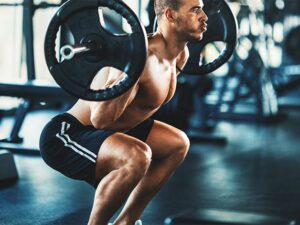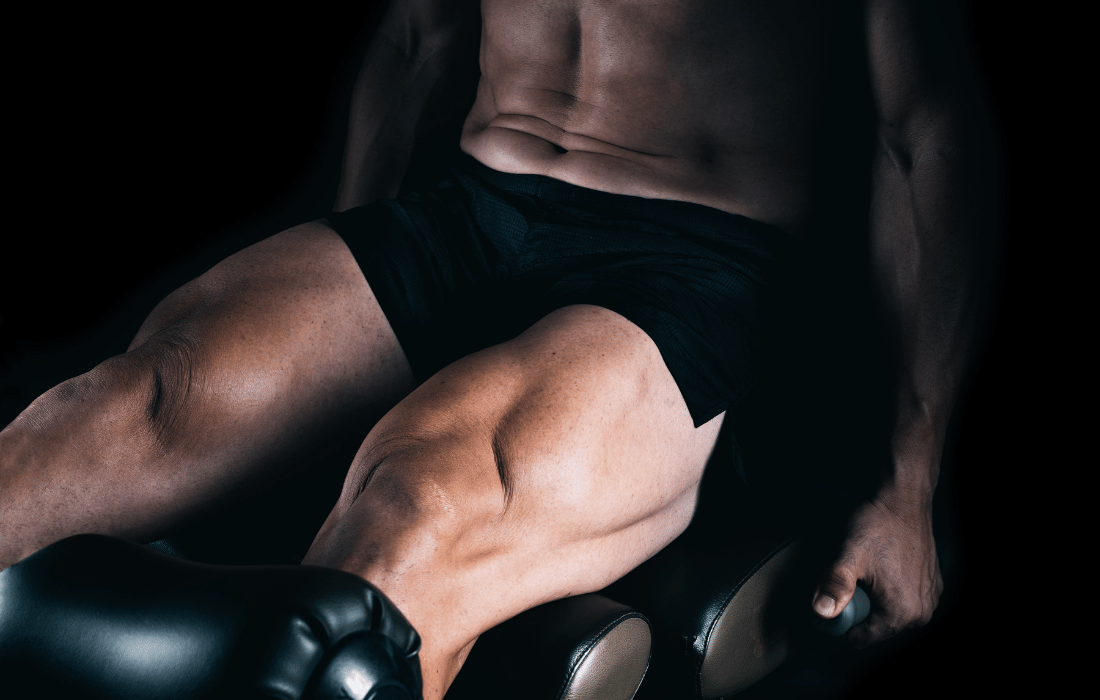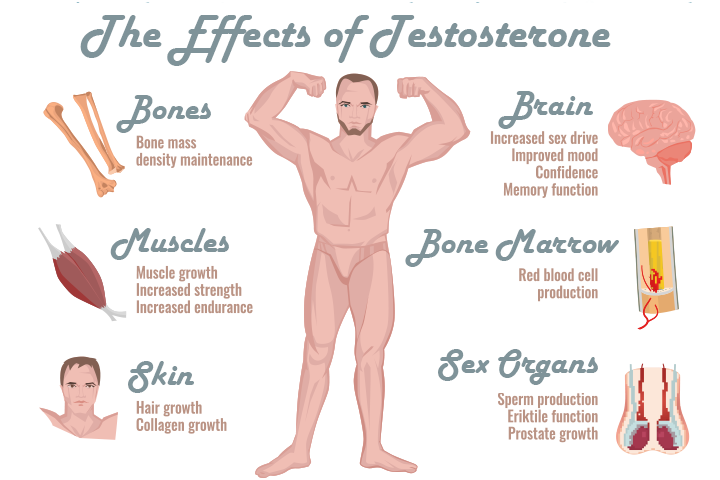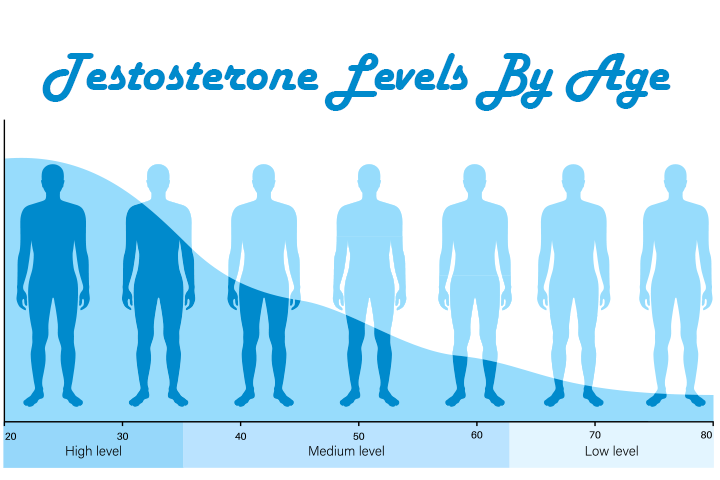Testosterone is often considered the foundation of male vitality—playing a critical role in muscle growth, fat burning, and overall well-being. But does leg training truly boost testosterone levels, or is this claim more gym folklore than fact? Let’s investigate the science behind leg training, testosterone production, and how different training styles impact your hormone health.
What is Testosterone and Why Does it Matter?
Testosterone, often shortened to “T,” is a powerful hormone involved in a range of bodily processes, from muscle growth and fat metabolism to bone density and mood regulation. Both men and women produce testosterone, although men generally have about ten times more of it. This hormone is both anabolic, which means it builds tissue (like muscle), and androgenic, meaning it promotes male characteristics like deeper voices and increased muscle mass. Testosterone levels peak in our 20s and then gradually decline with age—a natural process often accelerated by stress, poor diet, sleep deprivation, and environmental factors. The decline in testosterone is associated with increased fat gain, reduced muscle mass, and even shifts in energy and mood. Many men focus on ways to boost testosterone naturally through lifestyle adjustments and, increasingly, through tailored strength training routines designed to maximize T-production.
The “Leg Day Effect”: Can Targeting Your Lower Body Boost Testosterone?
Leg day is notorious for being one of the most challenging parts of any workout regimen, primarily because the muscles in your lower body are some of the largest and most powerful. There’s a common belief that training legs—whether through squats, deadlifts, or lunges—can elicit a surge in testosterone production. The premise is rooted in the idea that stimulating large muscle groups requires a more intense bodily response, which could involve increased hormone production. Studies in the Journal of Strength and Conditioning Research support this hypothesis, showing that intense, compound exercises that recruit multiple muscle groups often elicit a stronger hormonal response than isolated movements. But does leg training produce a significant enough testosterone spike to impact muscle growth over the long term?
Understanding Acute vs. Baseline Testosterone Changes
One critical point to understand is the difference between acute hormone responses (short-term surges after exercise) and baseline testosterone levels (long-term, consistent hormone levels). Research, such as a study published in the European Journal of Applied Physiology, has shown that testosterone levels do rise after an intense lower-body workout but generally return to baseline within 60-90 minutes. One 1989 study offers additional insight, showing that while young participants experienced a significant testosterone surge post-exercise, this change was relatively modest in elderly subjects. The study concluded that while resistance training-induced a noticeable testosterone response, age factors influenced both the intensity and duration of these hormonal surges. So, while leg day workouts can boost testosterone, the effect may not be sustained or pronounced enough to influence long-term baseline levels.
The Growth Hormone Link: Leg Training and Muscle Growth
 Beyond testosterone, leg training also influences growth hormone (GH) production. The same study by Craig and colleagues found that growth hormone responses to exercise were substantial in younger participants. Growth hormone is synergistic with testosterone in supporting muscle growth and recovery, helping increase muscle protein synthesis while reducing muscle breakdown. The study showed that GH levels spiked significantly in young participants from 0.85 ng/ml to over 8.61 ng/ml post-exercise, while older participants experienced an increase from 1.00 to 3.43 ng/ml. This dramatic increase in GH following lower-body strength training suggests that leg day can support not only muscle hypertrophy but also overall recovery and performance, regardless of age. However, the testosterone spike was not as consistent as the GH response, particularly in older adults. This implies that while testosterone is essential, growth hormone may play an equally pivotal role in muscle development, especially when the body’s testosterone response isn’t as robust due to age or other factors.
Beyond testosterone, leg training also influences growth hormone (GH) production. The same study by Craig and colleagues found that growth hormone responses to exercise were substantial in younger participants. Growth hormone is synergistic with testosterone in supporting muscle growth and recovery, helping increase muscle protein synthesis while reducing muscle breakdown. The study showed that GH levels spiked significantly in young participants from 0.85 ng/ml to over 8.61 ng/ml post-exercise, while older participants experienced an increase from 1.00 to 3.43 ng/ml. This dramatic increase in GH following lower-body strength training suggests that leg day can support not only muscle hypertrophy but also overall recovery and performance, regardless of age. However, the testosterone spike was not as consistent as the GH response, particularly in older adults. This implies that while testosterone is essential, growth hormone may play an equally pivotal role in muscle development, especially when the body’s testosterone response isn’t as robust due to age or other factors.
Maximizing the Testosterone Boost from Leg Training
Though short-lived, there are ways to make the most out of leg day’s testosterone boost. Here’s a closer look at methods backed by research that may amplify your testosterone response and support muscle growth over the long term:
1. Heavy Compound Movements (80% of Your 1RM)
For those aiming to spike testosterone, it’s critical to lift heavy. Compound movements that engage multiple large muscle groups, like squats, deadlifts, and leg presses, trigger a stronger hormonal response than isolation movements like leg curls or extensions. Aim for sets of 4–6 reps at 80% of your 1RM to activate the largest muscle fibers, which demand more hormone response.
2. High Training Volume
Research shows that performing multiple sets can lead to a larger hormonal surge than a single set. Aim for 3 to 6 sets per exercise to maximize T-production. A study published in the Journal of Strength and Conditioning Research confirms that higher volumes lead to increased testosterone and growth hormone release.
3. Short Rest Intervals
A study in Sports Medicine supports that resting for about 60-90 seconds between sets can help keep hormone levels elevated without allowing testosterone levels to dip too quickly. Longer rest intervals tend to decrease the intensity of the workout and reduce the testosterone response.
4. Avoid Overly Long Workouts
Research has shown that prolonged exercise sessions elevate cortisol, a stress hormone that counteracts testosterone production. Keep leg day within 45–60 minutes to get the most from the workout without triggering excessive cortisol, which may ultimately lower T levels if consistently elevated.
By structuring your leg workouts with heavy weights, high volume, short rest, and limited duration, you create an environment in your body that supports maximum testosterone and growth hormone production.
Aging and Testosterone: Why Baseline Matters More
While the short-term testosterone spikes from training are exciting, baseline testosterone is what really impacts health and long-term performance. As the study by Craig, Brown, and Everhart demonstrated, younger subjects consistently had a more pronounced testosterone response to exercise compared to older participants. Aging affects hormonal response, with testosterone and growth hormone levels declining naturally with age. Thus, baseline hormone levels are a more significant indicator of overall health and vitality. Maintaining a high baseline level of testosterone involves a combination of good nutrition, lifestyle habits, and regular resistance training. The acute spikes after workouts contribute to muscle recovery, but if baseline testosterone remains low, the impact on muscle growth and fat loss will be limited.
Natural Ways to Sustain Baseline Testosterone Levels
If you want to maximize your baseline testosterone and overall hormonal health, focusing on diet, lifestyle, and stress management is key. Here are some evidence-based strategies:
- Healthy Fats: Your body needs cholesterol to synthesize testosterone, so including sources like olive oil, avocado, nuts, seeds, and quality animal fats is essential.
- Sufficient Sleep: Sleep is when most hormone synthesis occurs. Aim for 7-8 hours of uninterrupted sleep per night to allow your body time for optimal recovery and testosterone production.
- Vitamin D: Adequate vitamin D has been linked to increased testosterone levels. Sun exposure is a great source, but supplementation is also effective.
- Strength Training: Consistent, progressive overload in strength training helps maintain higher baseline testosterone levels over time.
- Stress Reduction: Cortisol, the body’s primary stress hormone, competes with testosterone. Managing stress through practices like meditation or yoga can help maintain a favorable testosterone-cortisol balance.
These long-term strategies will help keep your body primed for muscle growth, energy, and optimal health, far more effectively than temporary post-exercise spikes in testosterone alone.
Busting the Myth: Why “Leg Day Alone” Isn’t a Testosterone Cure-All
The idea that leg day is a “magic pill” for testosterone is a bit oversimplified. While it’s true that lower body workouts with compound movements engage larger muscle groups and can lead to a short-term increase in testosterone and growth hormone, they don’t produce a lasting rise in baseline testosterone levels. In reality, any intense, full-body workout can have a similar effect, not just leg training. Chest, back, and even shoulder workouts that emphasize compound movements can lead to hormonal responses similar to those of leg day. Therefore, the answer to maximizing testosterone through exercise lies not in exclusively training legs but in balancing your workouts to include all major muscle groups with intensity.
The Growth Hormone Advantage: More Than Just Testosterone
While testosterone gets most of the attention, it’s important not to overlook the role of growth hormone in muscle recovery and growth. Growth hormone levels can rise significantly following resistance training, as seen in the Craig, Brown, and Everhart study, where younger participants experienced an eightfold increase in GH after 12 weeks of strength training. GH works alongside testosterone to promote muscle protein synthesis and accelerate recovery, making it a powerful tool for long-term strength gains. This hormone response, although modest in older populations, still supports strength and muscle maintenance as we age.
Conclusion: Leg Day and Beyond – The Holistic Approach to Testosterone
In short, leg day can trigger a temporary increase in testosterone and growth hormone, which is beneficial for muscle growth, recovery, and overall fitness. However, it’s not a standalone solution for increasing baseline testosterone levels. A holistic approach—one that incorporates regular full-body strength training, high-quality nutrition, adequate sleep, and stress management—is necessary for sustaining healthy testosterone levels and supporting muscle growth over the long term. Rather than focusing solely on leg day, aim for consistency and balance across your workouts to keep your hormones in check and your body performing at its best.
So yes, leg day matters—but it’s just one piece of the testosterone puzzle.










